My heart goes out to the people of Italy affected by the tragic earthquake. It is heartbreaking to see the devastation and loss of life. My deepest sympathy and love to you, brothers and sisters.
Some places have their secrets. When you take a road up the hill to the Woodstock gardens, Inistioge, you have these bushes and trees on your left, and you don’t expect anything else to be there. Then suddenly there is a gap between the trees through which you see the river Nore and the bridge, and the whole world behind them, just for a second, and you keep driving, stunned, unsure if it was for real.
Woodstock is a place loaded with history. This is a ten years old photograph from the gardens. I wonder how many secrets were shared while walking under the canopy of the Yew trees.
Famous Noble Fir Walk in 2005. Not all the trees survived the devastating storm in 2014 when Woodstock gardens lost 120 trees altogether. This alley feels like a temple.
The gardens are designed to surprise. As you walk, there is a surprise or a hidden secret around the next corner… like the Monkey Puzzle Walk that was initially planted in 1845. Historical estate drainage system made it possible for these trees to grow in the area, but they obviously cannot reach their expected age of 1000 years. Recently, many young Araucaria araucana trees were brought from Italy and planted to replace the fallen giants. Araucarias can be traced back to the Mesozoic era, and they know all the secrets of the dinosaurs. Araucaria araucana is native to the Andes, and was introduced to Europe in the end of the 18th century. It got its name Monkey Puzzle from a gardener in Cornwall. This magnificent Monkey Puzzle Walk is the oldest and longest in Europe. There are some other tranquil walks in the wooden area of Woodstock I have yet to explore, and I also want to see the 300 years old Oak trees that grew there long before Woodstock estate was developed.
I love Poppy flowers. I marvel at the way their petals are crumpled in the bud, at their elegant fruit with its beautiful cap (stigma disk, unusual in the blossom world), and seed chambers. When I grew up, we had plenty of opium poppies in our backyard garden. The seeds were collected and used for poppy seed muffins and other pastry, so they were considered food, and using the flowers as princesses and cutting the pods to learn their anatomy was not approved. Still, if we happened to live in some other country, like Australia or the USA, we might end up in jail for cultivating a source of drugs 🙂 . Sigh.
I took pictures of these beautiful poppy blossoms in the Woodstock walled garden. I haven’t seen a humble opium poppy for years, but on a few occasions I enjoyed a slice of poppy seed roll. These gorgeous cousins of opium poppy took me back to the happy days of the flower princesses and simple pleasures of my childhood.
Here is an Old World Poppy Seed Roll recipe.
Woodstock gardens date to the 1740’s. The restoration works that started in 1998 are slow, but steady. I will visit the gardens again and post more pictures in the future. Besides the walled garden, there are rose garden, rockery garden, conservatory, many woodland walks, and many secrets I have to learn.
Exochorda (Pearlbush) and Rhododendron – two beautiful shrubs in bloom. Exochorda, native to China, was introduced in Europe in the 19th century.
Giant Sequoia and Japanese Thuja – straight and crooked 🙂
If you are interested in the history of Woodstock and surrounding lands, you can find more in this article. The history and the people of Woodstock are very interesting to learn about.
In 1737, the twenty-six-year-old Sir William Fownes inherited the estate and commissioned an elegant mansion, completed in 1745. His only daughter Sarah inherited Woodstock after her parents’ death. She married William Tighe of Rossanagh, member of Parliament, and since then Woodstock House has been the home to the Tighe family.
Richard Tighe crossed the Irish Sea in the 1640s – he was a contractor who supplied Cromwell’s army with bread. A century later, Jonathan Swift would persecute his grandson Richard ( Dick) with stinging satire under the title of Dick Fitz-Baker. The Privy Councillor Richard Tighe was also called Dick a maggot, Clad all in Brown etc for making a mistake of informing upon Swift’s good friend.
Dick’s son William had three sons William, Edward and Richard, and a daughter Theodosia who became a mother to a romantic poet Mary Tighe. Mary began to write poetry as a child. In 1805, her six-canto Spenserian allegory Psyche was privately printed. Mary died in Woodstock from ‘consumption’. Asthma was hereditary in the Tighe family, as probably was tuberculosis accompanied with depression. Mrs. Tighe used all the profits from Psyche to built and extension to the Orphan Asylum in Wicklow. This article about Mary Tighe is a great read.
Mary married her first cousin, but it is her brother-in-law I want to mention here – William Statistical Tighe. He was so named because he was the author of ‘Statistical observations relating to Co Kilkenny in 1800-1801’. Statistical was one of the wealthiest landowners of that time; he inherited both Woodstock and Rossanagh. He was very well educated and had traveled around Europe and even to Russia. In 1793, Statistical began extensive works at Woodstock house and added two single-story wings.
Edward’s son George Tighe and his wife were good friends with Mary Shelley who adored their daughter Laurette and even wrote a story for her. This story had been lost for 150 years, and finally discovered in 1997 by an Italian lady in an attic of her Tuscan home.
Dick’s eldest grandson William was the one who married Sarah Fownes and started the Tighe dynasty in Woodstock.
Many gardens and walks were added between 1840 and 1900 by another William Tighe and his wife Lady Louisa Lennox. When Lady Louisa was 12 years old, she was allowed to stay with her godfather, the Duke of Wellington, at the Eve-of-Waterloo Ball, and helped him to buckle on his sword when the festivities were terminated with a call to arms. Lady Louisa set up a lace industry in Inistioge, and lived to the remarkable age of 97. She died in Woodstock in 1900.
In 1911, the next heir Edward and his wife Viola Tighe lost their seven years old son to asthma. The grief-stricken couple left Woodstock and settled in London. They moved most of the furniture, artworks and family heirlooms to London, except the library. In 1917, Captain Edward Tighe was murdered with a fire poker in their London home. The motive to this murder remains unknown. Their son Bryan was killed in 1940 in the battle of Dunkirk.
In 1921, the Woodstock house was burned to the ground by republican forces. The locals quickly removed whatever was left in the house before the fire started. Most of the library was destroyed in blaze, but the locals saved some old, leather-bound books that were taken away by horse and cart. The fire continued to burn for two days. The East wing of the house survived the fire and the Tighe’s former house keeper lived there for a number of years.
Old Cypress tree stretches its branches to touch the wall. It is unlikely that the tree was there when the house succumbed to the fire. Unlikely but not impossible. What if it was there, a seedling that survived the catastrophe?
The outstretched branch looks somewhat spooky. What is it trying to reach?
And there it is. The big dark secret. Look in the middle window.
I abandoned my initial plan to walk through the woods to the river Nore and take a picture of the other side of the bridge because I wasn’t sure that the figure in the window wouldn’t follow me. I briskly walked to my car and left. You might ask why would I want a picture of the other side of the bridge? I already had this one.
This is why. The sides of the bridge are different! In Inistioge, everything has a secret 🙂
Beautiful ten-arches bridge turns 250 this year. By the way, it is chronicled that a mermaid was found downstream of the bridge in 1118.
That’s enough secrets for today 🙂
 Have a wonderful weekend!
Have a wonderful weekend!
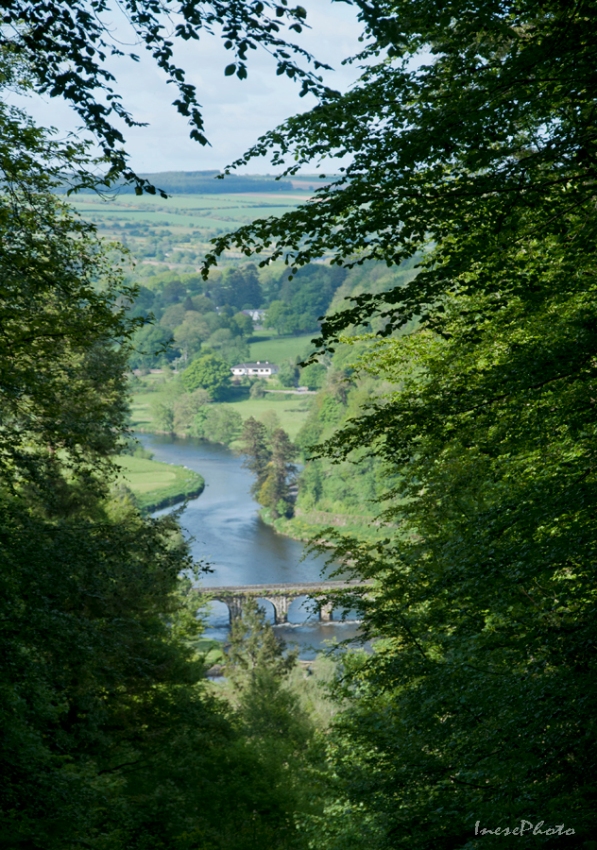
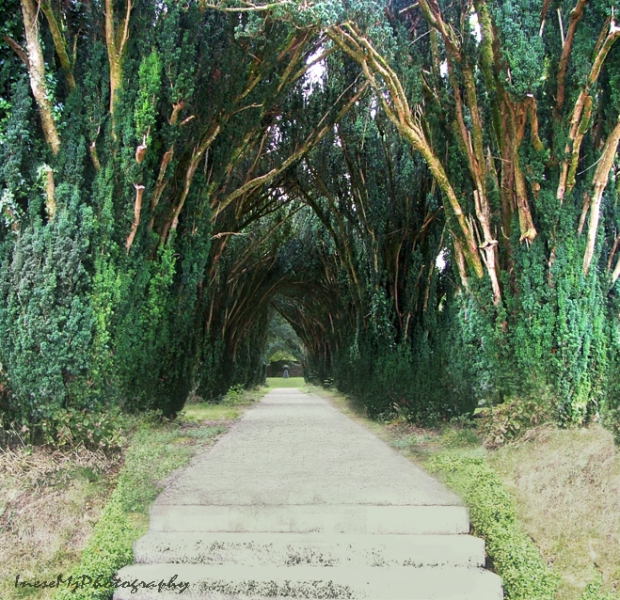
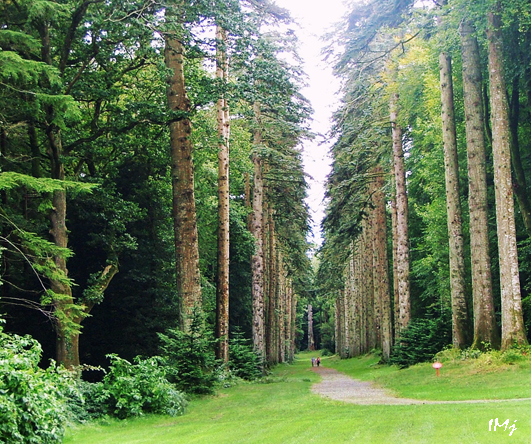






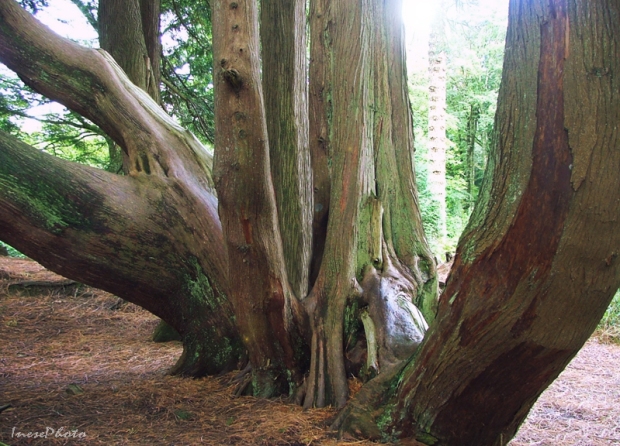
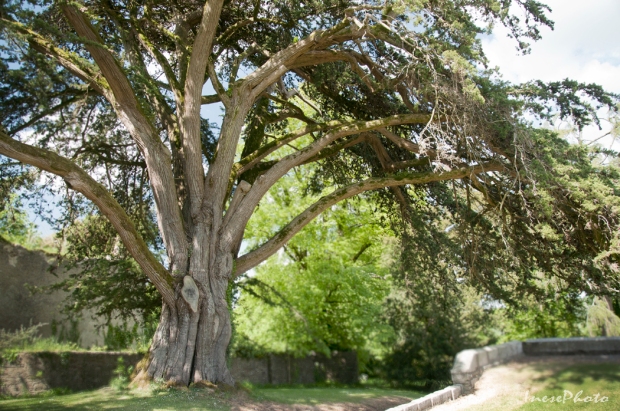
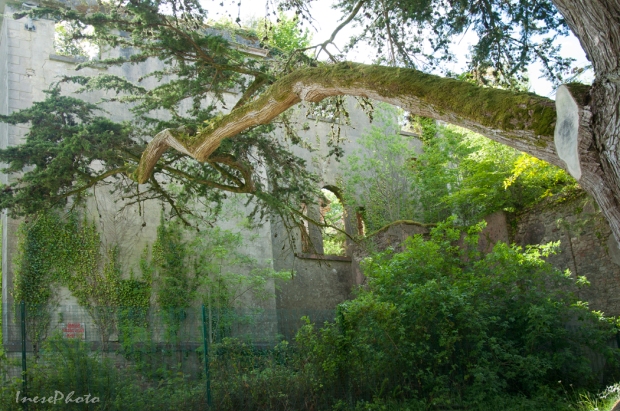


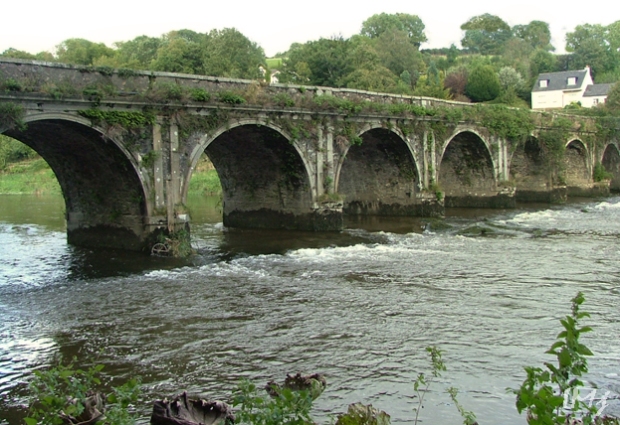
Italy is breathtaking through your lens Inese!
Thank you! 🙂
A wonderful collection of tree species here and all impressively old. t’s certainly a place with a lot of history, as well as secrets. It was interesting to find out how the monkey puzzle tree actually got that name. Stunning photos, as always – beautiful poppies.
Thank you so much, Millie! History is full of secrets indeed 🙂
That’s so true, and it’s nice to be able to ‘fish them out’.
I’ve loved your last 2 posts Inese – great pictures and background to the places. You should get a retainer from the Irish Tourist Board – actually I read in the paper this morning about a ‘new’ ish travel website called Freebird, for over ’50’s, which seems to have been set up in Ireland – I wondered if you’ve heard anything about it, since I think the father of the founder was another retired vet. I really liked the concept, and when we eventually get round to visiting your lovely region, we’ll base an itinerary round your posts,
best wishes
Julian
Thank you so much, Julian! I will look up the website. I am not in Ireland right now, and won’t be back for another three weeks – helping my daughter with the new baby. All the posts were written some time ago and scheduled. No time for computer these days 🙂
Best wishes!
Awesome trees. That monkey puzzle walk would take my breath away, those trees are so mightily tall and have such straight trunks. I do so love trees and spent many hours as a child drawing them, as well as doing bark rubbings, or just lie under them watching the sky through their branches.
That bit of the original house looks like a purpose-built folly. I love follies and have one in my latest novel, with the moon shining through its pretend windows. This weekend, I came across a folly door in an amazing garden I visited. Will be blogging about this garden later this month, a few days before it features on “Gardener’s World”. Do you get that TV programme in Ireland?
Thank you so much, Sarah! Aren’t the trees amazing. They grow until they die, and their life span is incredible compared to other plants.
So sorry, I haven’t watched the TV for years… Always there was something else to do, and then I quit altogether 🙂
I didn’t have a TV in my twenties or early thirties. My children’s friends thought it most odd when they first visited the house. But then they quickly decided that it was much more fun without it, as we did lots of imaginary games and inventive things. We also spent lots of time out of doors, exploring.
I have never been a TV fan. My daughter used to watch MTV in her teen years, and sometimes we would watch a movie. Now, when she has her own family, the kids are watching a Netflix movie once a day. That’s it.
I rarely have time to watch movies as they’re far too long. Just imagine how many books those kids could read in a year, instead of spending 1.5 – 2 hours a day watching movies!
Exactly. Hope they learn reading soon.
Another beautiful walk, Inese!!! Thank you so much for sharing your awesome photographs with us all – they are always the thing I look most forward to every week! 🙂 And so much lovely history details – I´m a real sucker for those 😉 Wish you a beautiful weekend, dear friend! xxxxxxxxx ❤
Thank you for stopping by, Sarah! 🙂 xx
You’re very welcome! 🙂 xxxxxxxxx
awesome pictures ❤
Thank you Leyla! ❤
There is always the mystery of the history of a place to keep my mind spinning, and along with your photos of the Woodstock gardens, I can understand why it is such a fascinating place. The secrets such places could share is what I find so exciting ~ and your first photo between the trees give a similar feel. Wish you a great weekend ahead ~
Thank you so much for stopping by! The history of old houses is fascinating.
We are so very busy with our little baby – I continue posting the scheduled stuff, but have a hard time visiting other bloggers. I will catch up when get back home in a couple of weeks. Have a wonderful weekend!
Great to be busy and enjoy ~ enjoy ~ enjoy 🙂
Thank you! 🙂
I think WordPress should introduce a button for “absolutely loved” Brilliant. A walk through history. I love learning about history and finding out about all Woodstock’s secrets, FABULOUS. That figure in the window was a bit spooky though 🙂 x
Thank you so much! There was no one else in the gardens at that time, and I did feel uneasy 🙂 I tried to look from a different angle expecting the figure to disappear, but it didn’t. Oh well, who can blame me – I just took off 🙂
Your photographs are stunning! I’m going to share your blog with a few of my friends.
Thank you so much, Madeline!